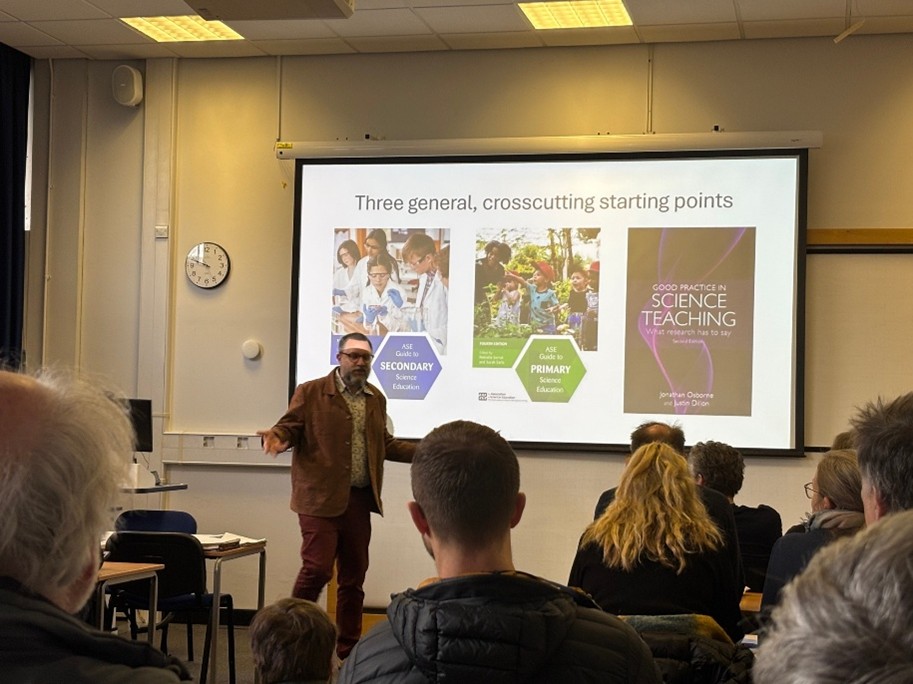Great Minds on Science Education
James de Winter – Faculty of Education, University of Cambridge
 This session provided a ‘soft-launch’ for a science education resource I have been working on for some time, an annotated science education bibliography. I aimed to collate some of the most thoughtful, insightful and valuable contributions that researchers and writers have made to science education in the last 40 or more years. As well as full details of the books and papers, I have added my personal commentary on the ‘highlights’ and why you might want to read them.
This session provided a ‘soft-launch’ for a science education resource I have been working on for some time, an annotated science education bibliography. I aimed to collate some of the most thoughtful, insightful and valuable contributions that researchers and writers have made to science education in the last 40 or more years. As well as full details of the books and papers, I have added my personal commentary on the ‘highlights’ and why you might want to read them.
Whilst the search for the latest new thing is understandable, this can mean that previous scholarship and contributions can be lost or forgotten when they still have messages of value to share. The papers and books cover primary and secondary and range from direct classroom suggestions to more theorised, abstracted work as well as all points in between. They are collated in themes, with the current themes listed below.
- Assessment
- Curriculum and the nature of the discipline(s)
- Discipline-specific highlights
- Emotions and the affective domain
- Explaining
- Language, words and communication
- Practical work
- Thinking about thinking
- Teacher development
The conference session offered some of my personal highlights from the 70+ books and papers currently included. To provide a flavour of the content of the session and the bibliography, below is the opening part of the section on Language, words and communication
Language, words and communicationA short, accessible intro is Language and talk in science education (Taylor, 2018). This is a chapter in the 4th Edition of the ASE Guide to Secondary Science Education (4th Edition) (Banner & Hillier, 2018) that highlights some of the key points and a good reading list. Even though it is older, Language and literacy in science education (Wellington & Osborne, 2001) is still a ‘classic’. It is well worth tracking down with much that is relevant and useful that can be used alongside some of the more general writing and advice on language and literacy. As well as drawing from the research base, each chapter has specific recommendations for practice. As an example from Chapter 2, there are two helpful taxonomies on the language of science. The first suggests that we consider words in science as falling into one of three categories, in each case that may have one or more meanings and from this, we can adapt how we introduce and support the correct use of them in the science classroom.
Later, they suggest that words may be used to describe three different types of things and that as these are quite different in nature, there is value in considering how this might lead to different ways in which we introduce them and support students to use them.
|
The bibliography may gain a more formal launch at some point in the future but will always be available for free. If you want a copy of the most recent version, please email me at jad26@cam.ac.uk.

